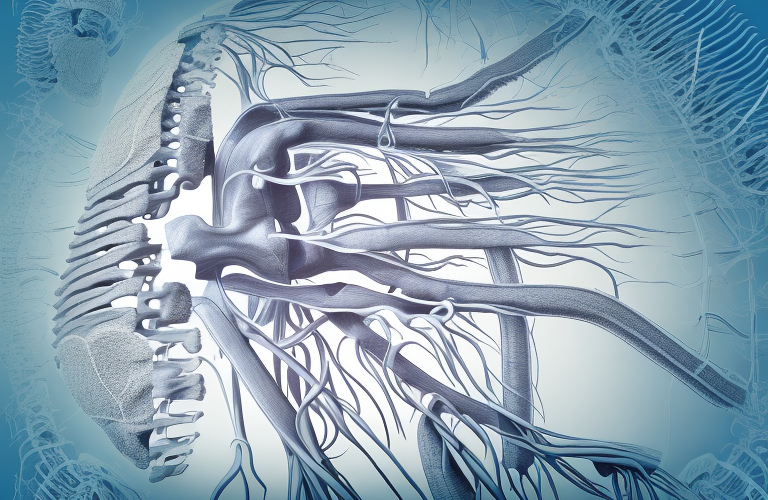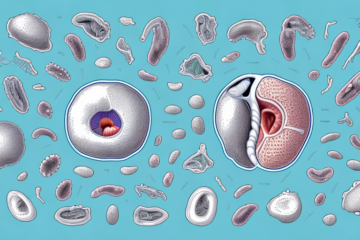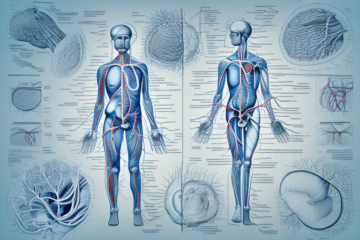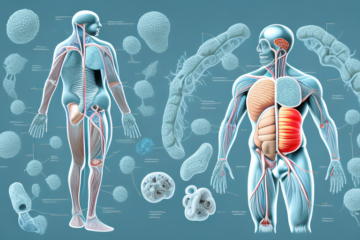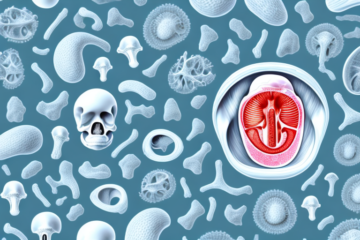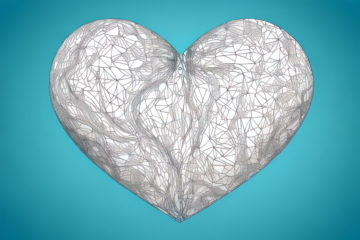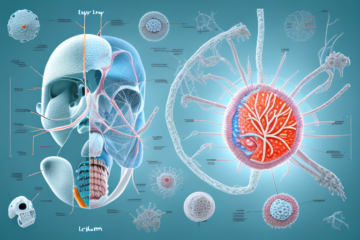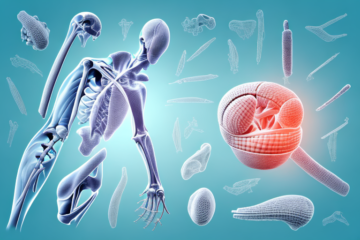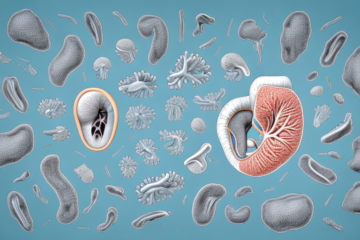The spinal cord is a long, thin tube of neural tissue that runs from the base of the brain to the lower back. It is one of the most important organs in the human body, responsible for transmitting nerve impulses throughout the body and enabling us to perform various physical activities. In this article, we will explore the anatomy and function of the spinal cord, as well as common disorders that affect its proper functioning, and ways to maintain a healthy spine for overall well-being.
The Anatomy of the Spinal Cord
The spinal cord is made up of 31 segments, each of which contains nerve roots that branch out to different parts of the body. These segments are divided into five regions, including the cervical, thoracic, lumbar, sacral, and coccygeal regions. The spinal cord is surrounded by three layers of protective tissue, including the dura mater, arachnoid mater, and pia mater. The vertebral column also provides vital protection for the spinal cord. The spinal cord is made up of both gray and white matter, with the gray matter containing the cell bodies of neurons and white matter containing the processes of neurons that transmit information to and from different parts of the body.
The spinal cord plays a crucial role in the body’s nervous system, serving as a pathway for transmitting information between the brain and the rest of the body. It is responsible for controlling many of the body’s reflexes, such as pulling your hand away from a hot stove. In addition, the spinal cord is involved in many other important functions, such as regulating blood pressure, breathing, and digestion. Damage to the spinal cord can result in a range of serious health problems, including paralysis, loss of sensation, and difficulty with bodily functions.
Understanding the Function of the Spinal Cord
The spinal cord plays a critical role in enabling us to perform various physical activities, including movement, sensation, and reflexes. The spinal cord acts as a pathway for the transmission of neural impulses between the peripheral nervous system and the brain. It also enables some basic reflex actions, such as the knee-jerk reflex. The spinal cord can also function independently of the brain in some situations, allowing for basic movements and reflexes even when the brain is not in control, such as when walking or standing upright.
One of the most important functions of the spinal cord is to protect the body from harm. It does this by sending signals to the muscles to contract and move the body away from danger. For example, if you accidentally touch a hot stove, the spinal cord will immediately send a signal to your muscles to pull your hand away from the heat source.
In addition to its physical functions, the spinal cord also plays a role in regulating some of the body’s automatic functions, such as breathing and heart rate. The spinal cord contains nerve cells that are responsible for controlling these functions, and it communicates with the brain to ensure that they are working properly. Damage to the spinal cord can therefore have serious consequences for these automatic functions, as well as for movement and sensation.
The Structure of the Spinal Cord: A Comprehensive Overview
The structure of the spinal cord can be divided into several key components, including the cervical, thoracic, lumbar, sacral, and coccygeal regions. Each of these regions contains a different number of nerve roots, which are responsible for transmitting neural impulses throughout the body. The spinal cord is also surrounded by various layers of protective tissue, including the dura mater, arachnoid mater, and pia mater. These layers help to protect the spinal cord from damage.
In addition to its structural components, the spinal cord plays a crucial role in the body’s nervous system. It serves as a pathway for sensory and motor information to travel between the brain and the rest of the body. The spinal cord also contains reflex pathways, which allow for rapid, automatic responses to certain stimuli. Damage to the spinal cord can result in a range of neurological deficits, including paralysis, loss of sensation, and impaired reflexes.
The Role of the Spinal Cord in Sensory Processing
The spinal cord plays a critical role in sensory processing, allowing us to perceive touch, pressure, temperature, and pain. Different regions of the spinal cord are responsible for processing different types of sensory information. For example, the dorsal horn of the spinal cord is responsible for processing pain signals from the body. The spinal cord also plays a role in modulating pain signals, helping to reduce the sensation of pain and promoting healing.
In addition to its role in sensory processing, the spinal cord also plays a crucial role in motor function. The spinal cord contains motor neurons that control muscle movement throughout the body. These neurons receive signals from the brain and send them to the muscles, allowing us to move and perform various tasks.
Furthermore, the spinal cord is also involved in reflex actions. Reflexes are automatic responses to certain stimuli, such as pulling your hand away from a hot stove. These reflexes are processed in the spinal cord, allowing for a quick and immediate response without the need for input from the brain.
How the Spinal Cord Controls Motor Activities in the Body
The spinal cord is also responsible for controlling motor activities in the body, enabling us to perform various physical activities, such as walking, running, and jumping. The motor neurons in the spinal cord are responsible for transmitting neural impulses to the muscles, which then contract and produce movement. Different regions of the spinal cord are responsible for controlling different muscles and movements.
Additionally, the spinal cord plays a crucial role in reflex actions, which are rapid and automatic responses to certain stimuli. For example, when you accidentally touch a hot stove, your hand immediately pulls away before you even consciously register the pain. This reflex action is controlled by the spinal cord, which sends a signal to the muscles in your hand to contract and move away from the heat source. Without the spinal cord, our bodies would not be able to react quickly to potential dangers or threats.
The Neural Pathways Involved in Spinal Cord Functioning
The functioning of the spinal cord is dependent on several neural pathways that connect different regions of the body with the brain. These pathways allow for the transmission of neural impulses between the peripheral nervous system and the central nervous system. The corticospinal pathway is responsible for controlling voluntary movements, while the spinothalamic pathway is responsible for transmitting sensory information from the body to the brain.
Another important neural pathway involved in spinal cord functioning is the dorsal column pathway. This pathway is responsible for transmitting information related to touch, vibration, and proprioception (the sense of body position) from the body to the brain. The dorsal column pathway consists of two tracts: the fasciculus gracilis, which carries information from the lower body, and the fasciculus cuneatus, which carries information from the upper body. Damage to the dorsal column pathway can result in sensory deficits, such as the inability to feel touch or changes in body position.
Common Disorders Affecting the Spinal Cord and Their Impact on Health
There are several disorders that can affect the proper functioning of the spinal cord, including spinal stenosis, herniated discs, and spinal cord injuries. These disorders can result in a range of symptoms, including pain, weakness, numbness, and paralysis. The impact of these disorders on health can vary depending on the severity and duration of the condition, but they can have a significant impact on well-being and quality of life.
It is important to note that early diagnosis and treatment of spinal cord disorders can greatly improve outcomes and prevent further damage. Treatment options may include medication, physical therapy, surgery, or a combination of these approaches. In addition, lifestyle modifications such as maintaining a healthy weight, practicing good posture, and engaging in regular exercise can also help to prevent and manage spinal cord disorders.
The Relationship Between Brain and Spinal Cord Functioning
The brain and the spinal cord are intimately connected, with the spinal cord serving as a critical pathway for the transmission of neural impulses between the brain and the peripheral nervous system. Without the spinal cord, the brain would be unable to communicate with the rest of the body, and our ability to perform physical activities would be severely limited.
Additionally, the spinal cord plays a crucial role in reflex actions, such as pulling your hand away from a hot stove or quickly adjusting your balance to avoid a fall. These reflexes are processed within the spinal cord itself, without the need for input from the brain. This allows for rapid responses to potential dangers or threats, and can often prevent serious injury.
The Developmental Stages of the Spinal Cord
The development of the spinal cord is a complex process that occurs during embryonic development. The spinal cord initially begins as a neural tube, which then differentiates into the different regions of the spinal cord. The development of the spinal cord is critical for the proper functioning of the nervous system, and abnormalities in this process can lead to a range of developmental disorders.
During the early stages of spinal cord development, the neural tube undergoes a process called neurulation, where it folds and fuses to form the spinal cord. This process is regulated by a complex network of genes and signaling molecules. As the spinal cord develops, it becomes segmented into different regions, each with its own unique set of neurons and functions. The final stage of spinal cord development involves the formation of the protective covering, or myelin sheath, around the nerve fibers. This process is essential for the proper transmission of nerve impulses and is critical for normal nervous system function.
The Importance of Maintaining a Healthy Spine for Overall Well-being
Maintaining a healthy spine is critical for overall well-being, as it enables us to perform physical activities and supports the structure of the body. There are several lifestyle changes and exercises that can help to maintain a healthy spine, including regular exercise, maintaining good posture, and avoiding activities that place excessive stress on the spine.
In addition to these lifestyle changes and exercises, it is also important to seek professional help if you experience any back pain or discomfort. A chiropractor or physical therapist can provide personalized treatment plans to address any issues with your spine and prevent further damage. It is also important to note that maintaining a healthy spine not only improves physical well-being but can also have a positive impact on mental health, as chronic pain and discomfort can lead to stress and anxiety.
How to Prevent Injuries to the Spinal Cord through Lifestyle Changes and Exercises
Preventing injuries to the spinal cord is essential for maintaining proper spinal cord function and overall well-being. There are several lifestyle changes and exercises that can help to prevent injuries to the spinal cord, including regular exercise, maintaining good posture, and avoiding activities that place excessive stress on the spine. It is also critical to seek medical attention if any symptoms of spinal cord injury or disease arise.
One of the most effective ways to prevent spinal cord injuries is to engage in regular exercise. Exercise helps to strengthen the muscles that support the spine, which can reduce the risk of injury. Additionally, exercise can help to improve flexibility and range of motion, which can also help to prevent spinal cord injuries.
Maintaining good posture is another important factor in preventing spinal cord injuries. Poor posture can place excessive stress on the spine, which can lead to injury over time. To maintain good posture, it is important to sit and stand up straight, with your shoulders back and your head aligned with your spine. You should also avoid slouching or hunching over, as this can place additional stress on the spine.
Treatment Options for People with Spinal Cord Injuries or Diseases
There are several treatment options available for people with spinal cord injuries or diseases, including surgery, physical therapy, and medication. The type of treatment that is most appropriate will depend on the underlying condition, its severity, and the overall health of the individual. In some cases, treatment may involve a combination of different approaches.
In addition to these traditional treatment options, there are also emerging therapies being developed for spinal cord injuries and diseases. These include stem cell therapy, electrical stimulation, and robotic exoskeletons. Stem cell therapy involves the use of stem cells to repair damaged tissue and promote healing. Electrical stimulation can help to improve muscle function and sensation. Robotic exoskeletons can assist with mobility and improve quality of life for individuals with spinal cord injuries. While these therapies are still in the early stages of development, they offer hope for improved outcomes and quality of life for those living with spinal cord injuries or diseases.
Research Advances in Understanding and Treating Spinal Cord-Related Disorders
Advances in understanding the functioning and diseases of the spinal cord are ongoing, and new treatments and approaches to spinal cord-related disorders are continually being developed. Some of these advances include the use of stem cells to promote healing, the development of new medication to alleviate pain, and the use of advanced imaging techniques to diagnose and treat spinal cord disorders.
Overall, the spinal cord is a critical organ in the human body that plays a vital role in enabling us to perform physical activities and perceive sensory information. Understanding the anatomy and function of the spinal cord is essential for maintaining a healthy spine and avoiding injuries or diseases that can affect its proper functioning.
Recent research has also focused on the use of electrical stimulation to promote nerve regeneration and improve motor function in patients with spinal cord injuries. This approach involves the use of small electrical currents to stimulate the nerves in the affected area, which can help to promote the growth of new nerve cells and improve muscle control.
In addition, advances in robotics and prosthetics have led to the development of new devices that can help individuals with spinal cord injuries to regain mobility and independence. These devices include exoskeletons, which are wearable robotic suits that can assist with walking and other physical activities, as well as advanced prosthetic limbs that can be controlled using neural signals from the brain.

